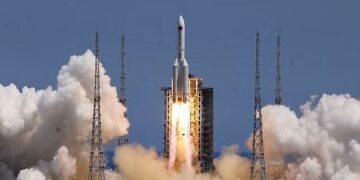The International Monetary Fund (IMF) has raised Asia’s economic forecast for this year as China’s recovery underpins growth. But it is a warning of risks from persistent inflation and global market volatility driven by Western banking-sector woes.
The reopening of China’s economy is pivotal for the region with the spillover focused on consumption and service-sector demand rather than investment, the IMF said on Tuesday”
“Asia and Pacific likely to be dynamic of the world’s major regions in 2023. Predominantly driven by the buoyant outlook for China and India.” The IMF said its regional economic outlook report.
“It said that, as in the rest of the world, domestic demand is to remain the largest growth driver across Asia in 2023.
Asia’s economy will expand 4.6 per cent this year after a 3.8 per cent increase in 2022. Contributing about 70 per cent of global growth, said the IMF. This upgraded its forecast by 0.3 percentage points from October.
growth rate
China and India will be key drivers with an expansion of 5.2 per cent and 5.9 per cent, respectively.
As a result, the IMF cut next year’s Asian growth forecast by 0.2 percentage points to 4.4 per cent and warned of risks to the outlook. Such as stickier-than-expected inflation, slowing global demand and the impact of the United States and European banking sector stress.
“While spillovers to the region from stress in the US and European financial sectors have relatively contained thus far. Asia remains vulnerable to tightening financial conditions and to the sudden and disorderly repricing of assets,” the IMF said.
And while Asia has strong capital and liquidity buffers to fend off market shocks, the region’s highly leveraged corporate and household sectors are “significantly” more exposed to a sharp increase in borrowing costs, it added.
The IMF also urged central banks in Asia. Excluding Japan and China to keep monetary policy tight to bring down inflation. It could remain stubbornly high due in part to robust domestic demand.















































